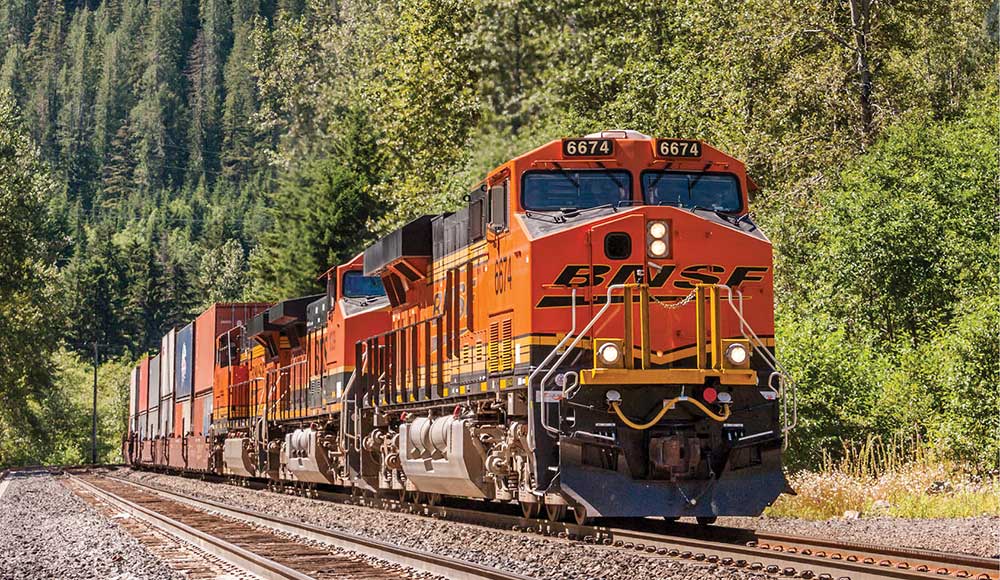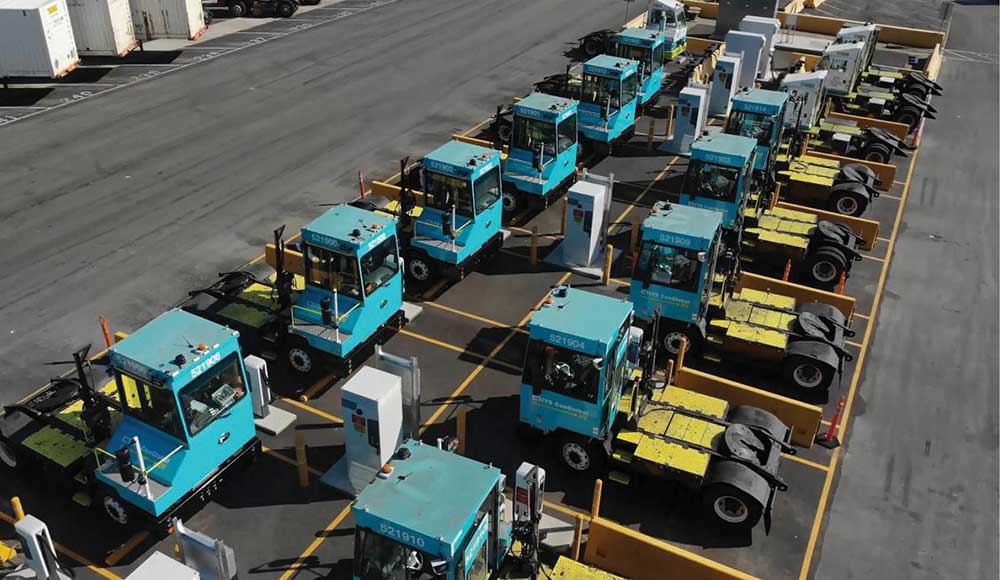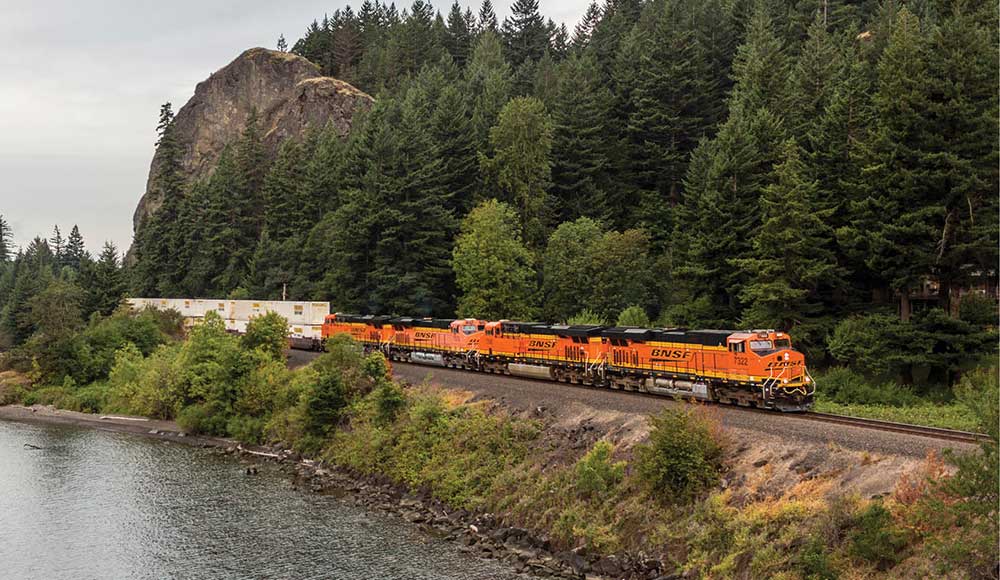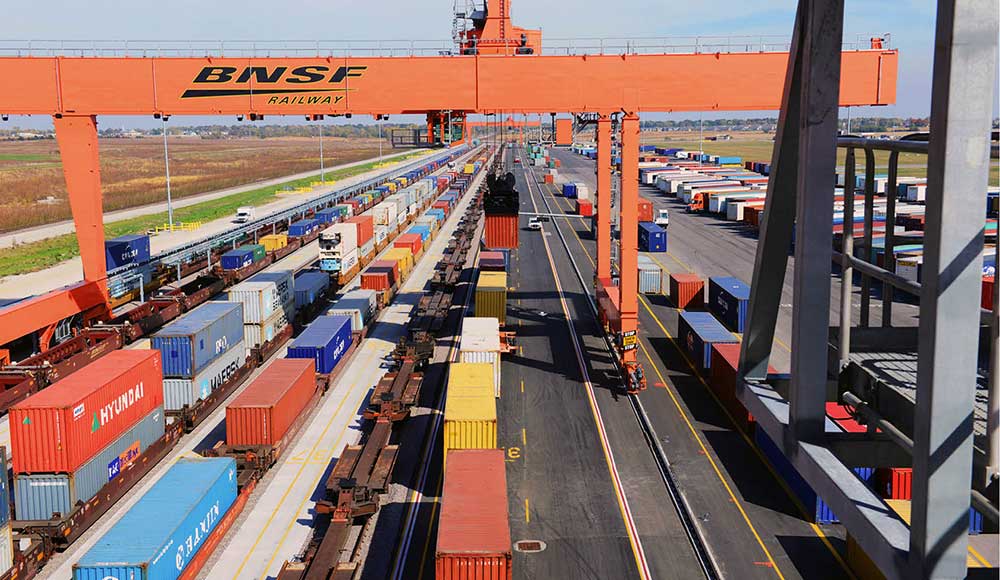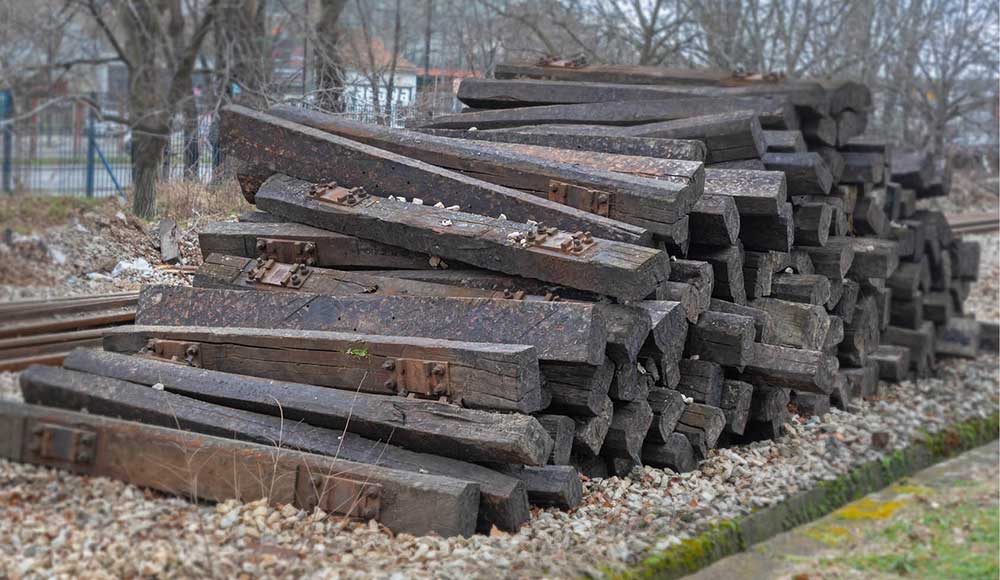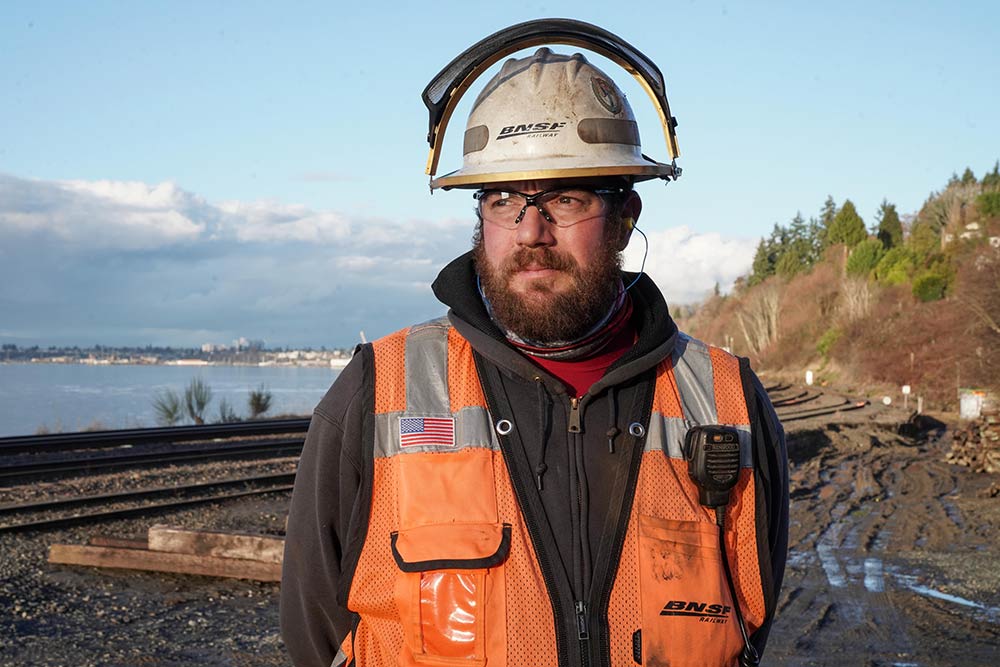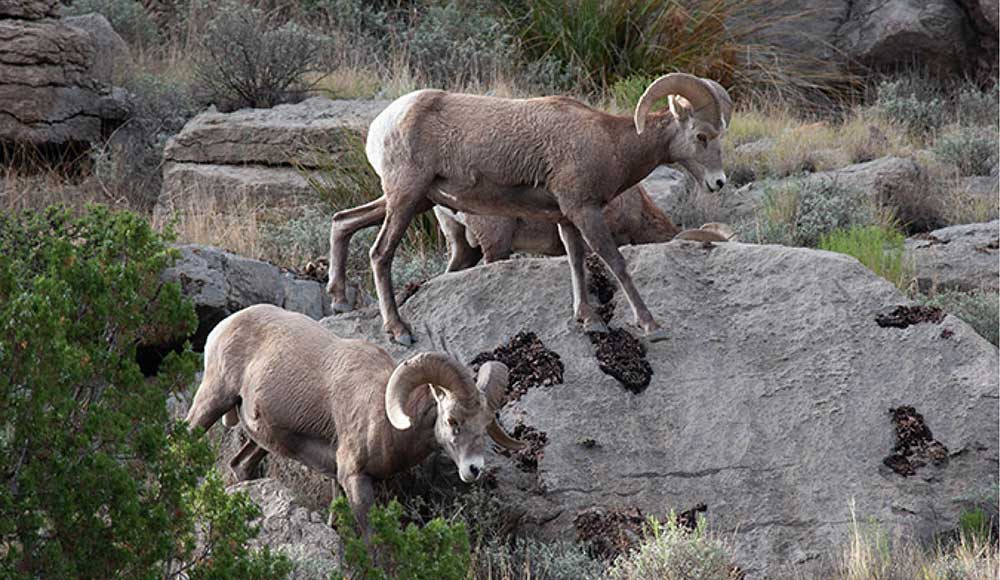Next-Generation Technology
In 2021, BNSF successfully tested a prototype 100-percent battery-electric locomotive, in collaboration with Wabtec. Now BNSF has committed to purchase four next-gen locomotives from Progress rail, scheduled for delivery in 2024, that will have an eight-megawatt battery. We are also working with an industry group on high-speed charging stations in the range of 1.4 to 2 megawatt hours and plan on installing several chargers in Southern California in 2023 to support these new locomotives, which we will test in yard, local and regional service.
We are testing a variety of next-generation (battery-electric and hybrid-powered) cargo-handling equipment at three of our California intermodal facilities. In fact, our Stockton yard is the first fully electric hostler facility in the United States with 21 battery-electric hostlers (vehicles that move equipment within our yards) and a hybrid-electric rubber-tired gantry crane, which reduces emissions by 90 percent. The Stockton facility also has a 0.75 mega-watt solar array providing renewable energy back to the facility’s grid.
Additionally, our work with Progress Rail and Chevron to pilot a demonstration of a locomotive powered by hydrogen, a technology that holds great promise for dramatically reducing carbon emissions in long-haul transport.


